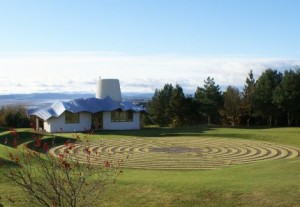Landscape recalls you into a mindful mode of stillness, solitude and silence where you can truly receive time. ~ John O’Donohue
x
An experience with beauty can transcend us for a moment from the grind of our daily experience and offer a moment of the healing that comes from rest. To experience beauty is to enjoy a delight to the senses. It can open our heart, ease our mind and remind us of the greater joys of life that live beyond stress.
Beauty is everywhere and always accessible when you begin to look for it. In our culture people often mistake glamour for beauty. We have rigid rules and assessments for what is beautiful and what isn’t. Glamour is “the quality of fascinating, alluring, or attracting, especially by a combination of charm and good looks”. It breaks beauty down to predictable patterns of movement or exact measurements of proportion.
But beauty is so much more than that. Anything created with a spark of love is a thing of beauty. There is beauty in the perfection of nature, in heartfelt expressions, in noble failures and in steadfast devotion. Learning to recognize and delight in the beauty of the mundane can bring us rewards of pleasure. Dr. Semir Zeki, a professor of neurobiology at University College, London, has identified a near-universal response to beauty in the medial orbito-frontal cortex. When people look at something they find beautiful, there’s increased blood flow to this portion of the brain that is associated with pleasure and reward. To date the type of input, either visual or auditory, both “reward” the same spot of the brain. And the more beautiful you find the thing, the more reward your brain senses.
Healing Environments
Visionaries in the field of health care design are beginning to test the impact that beautiful surroundings – artwork, buildings, furnishings and gardens – can have on creating space for healing. Environmental psychologist Roger Ulrich found in multiple studies that there are significant healing benefits in seeing and being in nature, even looking at lifelike pictures of nature. Patients with a simulated “window views” (a large nature photograph like an open, tree-lined stream or a shadowy forest scene) were less anxious and needed fewer doses of strong pain medicine than those who looked at the darker forest photograph, abstract art or no pictures at all. Hospital healing gardens, full of greenery and gentle water features, become a haven for patients and hospital staff alike.
AtlantiCare Health System has demonstrated its commitment to the healing effect of art by installing over 500 pieces by local New Jersey artists in its facilities. By integrating medicine and the arts through its Healing Arts program, they expose patients to the restorative gift of art as a way of living their intent to be a healing presence for the community.
World Class Architecture
Maggie’s Cancer Caring Centres are built around the world as an alternative space where cancer patients and their families can receive counselling in a warm, supportive environment. The Dundee Centre (shown above) was fashioned after Brochs, the stone circular dwellings dotting Scotland’s highlands. Frank Gehry designed the two-story tower that overlooks a garden labyrinth on one side and a sweeping view of the nearby estuary on the other. The project started after Maggie Jencks’ difficult clinical interview for a cancer diagnosis in a dismal, lonely, outdated building in Edinburgh. She and her husband decided that good design can make a difference in the lives of cancer patients and put their friendships with architectural luminaries to good use.
And, of course, I can’t write about beauty and healing without giving a shout out to one of my all time favorite movies, The Diving Bell and the Butterfly. In description it sounds unwatchable: a French editor of Elle Magazine has a stroke that leaves him unable to do anything except blink, a victim of locked-in syndrome. But the many levels of beauty with which his story is told by artist Julian Schnabel makes for a visual and emotional celebration of spirit. I found it profoundly beautiful and deeply healing, the aim of great art.


